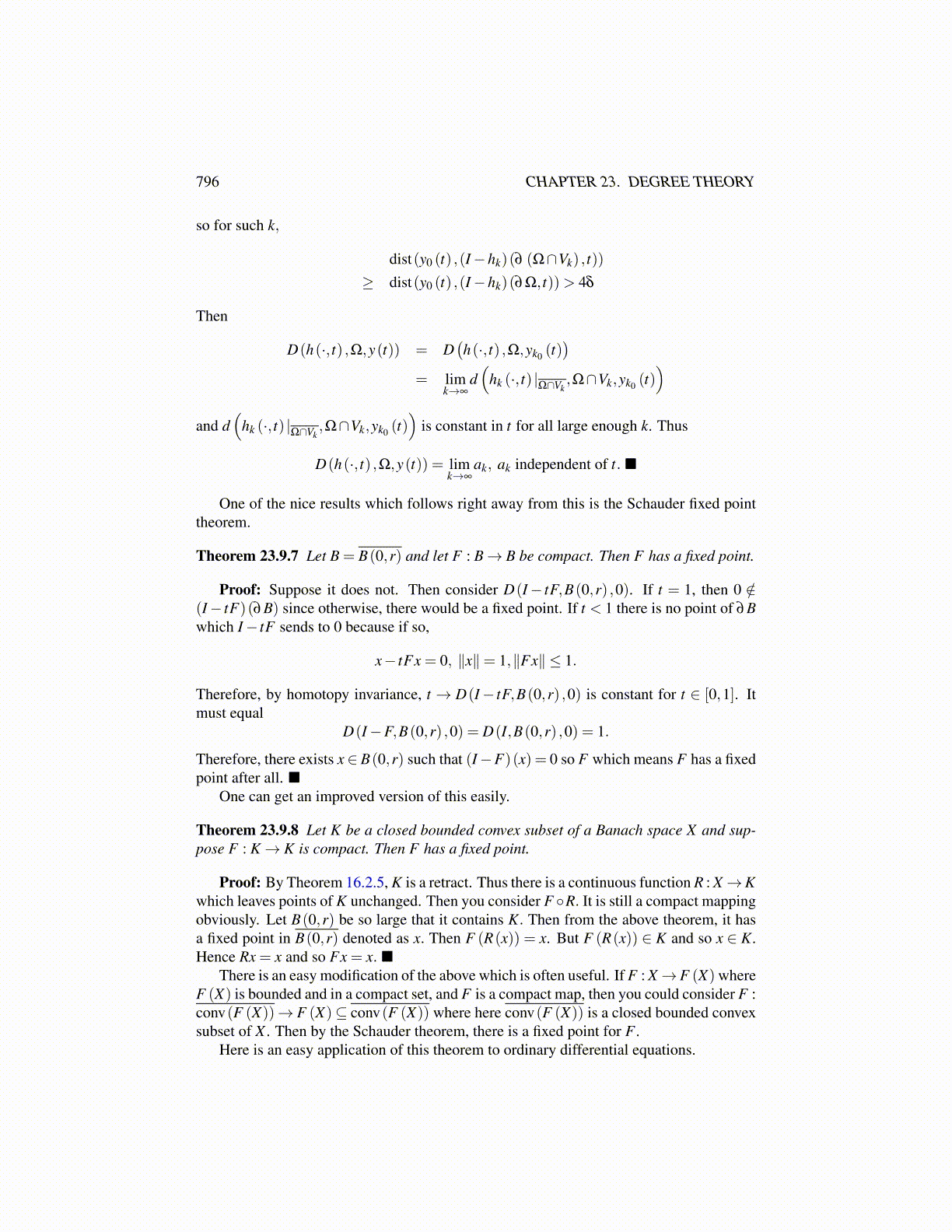
796 CHAPTER 23. DEGREE THEORY
for all t. Also,dist(y0 (t) ,(I−h)(∂Ω, t))> 5δ
From the above, let hk→ h uniformly on Ω× [0,1] but hk has values in a finite dimensionalsubspace Vk.Let all the Vk contain the values of yk0 and so, for all k large enough,
supΩ×[0,T ]
∥h(t,x)−hk (t,x)∥< δ
so for such k,
dist(y0 (t) ,(I−hk)(∂ (Ω∩Vk) , t))
≥ dist(y0 (t) ,(I−hk)(∂Ω, t))> 4δ
Then
D(h(·, t) ,Ω,y(t)) = D(h(·, t) ,Ω,yk0 (t)
)= lim
k→∞d(
hk (·, t) |Ω∩Vk,Ω∩Vk,yk0 (t)
)and d
(hk (·, t) |Ω∩Vk
,Ω∩Vk,yk0 (t))
is constant in t for all large enough k. Thus
D(h(·, t) ,Ω,y(t)) = limk→∞
ak, ak independent of t.
One of the nice results which follows right away from this is the Schauder fixed pointtheorem.
Theorem 23.9.7 Let B = B(0,r) and let F : B→ B be compact. Then F has a fixed point.
Proof: Suppose it does not. Then consider D(I− tF,B(0,r) ,0). If t = 1, then 0 /∈(I− tF)(∂B) since otherwise, there would be a fixed point. If t < 1 there is no point of ∂Bwhich I− tF sends to 0 because if so,
x− tFx = 0, ∥x∥= 1,∥Fx∥ ≤ 1.
Therefore, by homotopy invariance, t → D(I− tF,B(0,r) ,0) is constant for t ∈ [0,1]. Itmust equal
D(I−F,B(0,r) ,0) = D(I,B(0,r) ,0) = 1.
Therefore, there exists x∈ B(0,r) such that (I−F)(x) = 0 so F which means F has a fixedpoint after all.
One can get an improved version of this easily.
Theorem 23.9.8 Let K be a closed bounded convex subset of a Banach space X and sup-pose F : K→ K is compact. Then F has a fixed point.